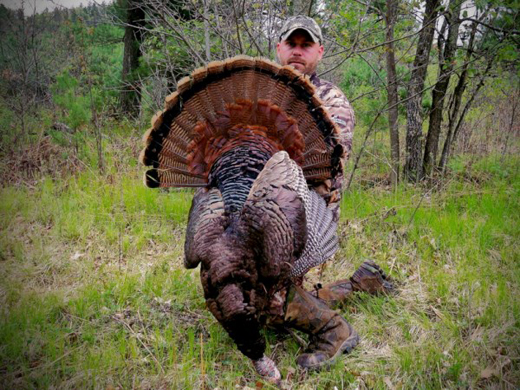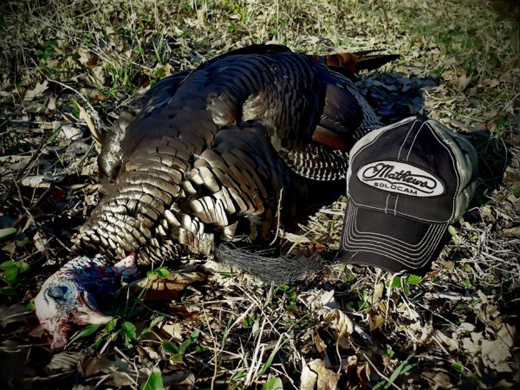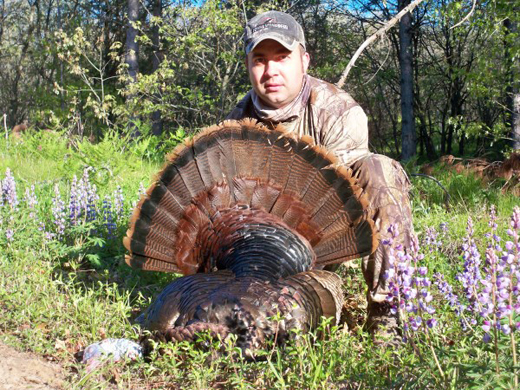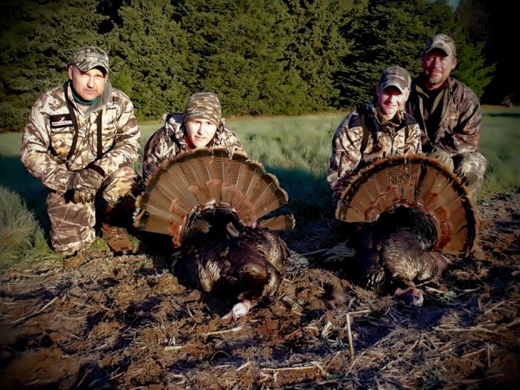LAST UPDATED: May 1st, 2015
As winter time slowly winds down and spring begins to ramp up….so does the turkey woods. If you are like the rest of us here at Bowhunting.com, you’re practicing your calls while double (and even triple) checking your turkey hunting gear. To help you get ready I have chosen some killer turkey tactics that I believe will bring you success this spring. So let’s jump right in and start counting down my top 10 turkey tactics for 2013. (turkey hunting basics)
10-Get The MRI (Most Recent Information)
Because turkeys can change their patterns within a couple of days it is important to have the most recent information (or MRI) in the area you plan to hunt. Getting the MRI not only involves actual leg work and scouting, but if you’re planning on hunting out of state the best option for obtaining the MRI is a simple phone call to people that drive the roads or are out in the field working every day. This may include, but not limited to, mail delivery personnel, milk delivery drivers, farmers, local conservation wardens, and even the local sheriff’s office (Please don’t dial 911 to ask for the 411 on the turkeys).To us hunters it might be an emergency but to them I’m guessing, not so much.
Pictured here is the author with a “high-noon” gobbler.
You will be surprised by the wealth of information these individuals are able to provide. Everything from where they are seeing other hunters to locations they see a big old long beard strutting every morning. If you’re not doing your homework when it comes to gathering the MRI then you’re cheating yourself of a successful spring season. Every year I hunt out of state and every time within the first day I am in birds. This is all possible by making a quick and simple phone call to the local game warden to ask for the MRI of the area I plan on hunting. (watch turkey hunting videos)
9- Hunt The Staging Areas Before Fly Up
As the afternoon progresses and it gets closer to the time for the birds to fly up to their evening roosts, they often work staging areas to mill around and look for their last bite to eat before calling it a day (flying up to the roost). These staging areas can be easy to find. They are often the same areas that the birds fly down to in the morning. These are often those spots where that long beard flies down and struts around with his hens for the first hour of daylight in the morning. Often, the ground in this area will be tore up with scratching’s and on average is within three hundred yards of their roost trees. Game cameras can also be used in these locations to better pattern what time the flock is coming back to the area for the evening “fly up”. The best method to hunting these staging areas is to get into the area at least an hour or two before the evenings fly up time. Most often I will use a pop up blind and do random calling as I wait for the flock to return for the evening.
This bird was the victim of a staging area ambush.
8-Scout and Put Them to Bed (tuck them in tight)
Any deer hunter worth his or her grain of salt spends their time in the woods pattering their next big buck for the upcoming fall season, but you would be surprised as to how many turkey hunters just head to the woods with no information gained from prior scouting. It’s much easier to call in that long beard when you’re in a location he already wants to go. Why not get out there before the season starts and figure out where that area is. Scouting for turkeys can be rather easy; it just requires some leg work, some glassing and early morning listening adventures. (turkey call options)
Often, I will start my scouting trips at first light to listen to where the long beards in the area like to roost. After plotting these locations on my maps I listen to where they want to go as they gobble after fly down. If they shut up after fly down, I start driving and glassing nearby fields or locations I suspect they were heading too. Another method is to simply take a walk noting turkey sign such as droppings, strut marks, tracks and scratchings. The key is to gain a better knowledge of the bird’s habits and most often traveled routes in your area. Keeping in mind that the only thing predictable about a turkey is that he is unpredictable. This means that he may not hold to the exact same pattern every day; however the information you gain from scouting will help you understand the best possible set up location for your area.
If you simply walk into the woods expecting to find turkeys to hunt you may have trouble filling tags. Invest a little time “before the hunt” locating birds and making a gameplan…then move in for the kill.
In the evenings and especially the night before your hunt you will want to do what is often called “putting birds to bed”. Personally, I like to tuck them in tight and wish them sweet dreams. The last half hour of day light is your most effective time while using this method. I like to say that the time of the evening that works best to get a response is that same magic window when deer hunting really gets good. It’s just after the sun goes below the tree line and light begins to fade. I like to use an owl call, but calls such as a crow or coyote howl also work well. Once I get that long beard to spark a gobble, I begin working my way closer and closer to him as light slowly begins to fade. You must be very careful not to bump him or any other birds in the area out of the roost as you close the distance. The key is to keep him gobbling as you close in on him.
Once you know exactly what tree his is in or have a really good idea of where he is roosted, stop and back out for the night using the cover of darkness. Once back at camp, scour over your maps and data that you gathered from previous scouting trips in order to come up with the next morning’s plan of attack. This is what I call not only putting him to bed but “tucking him in tight”.
7- Gobble At Them
Have you ever had those days or even weeks that birds won’t gobble at any type of hen talk you throw at them, but they will gobble at a crow call or an owl hoot? Or, that long beard gobbles every time another bird in the area gobbles. Then when he flies down he hits the ground answering another tom and soon the two gobbling birds meet up. This scenario is quite common during the early season. At this time of spring, toms are more interested in establishing dominance and who is who in the flock. Call it pre-game planning, if you will, to prepare for the breeding season to hit full swing. There are several gobble calls on the market, one of my favorite calls to use is a new gobble call named the “Haint” by Down-N- Dirty Outdoors. It is a reed style call that does take some practice; you won’t be able to pull this call out of the box and expect to sound like a long beard cranking out gobbles. However with some practice you will be able to reproduce the most realistic gobbles ever by any call on the market. (Gobbler Getter Broadhead)
When that long beard just doesn’t seem interested in your sweet hen talk don’t be afraid to throw some gobbles at him and mixed in some aggressive hen cuts and yelps to make him think a new guy on the block has slipped in and is having all the fun. While this tactic is best used earlier in the spring, it can be just as effective on that stubborn old long beard later on in the season as well. On a side note, when gobbling whether on private or public land, you will need to use extreme caution and always err on the side of safety. Remember, not only could you be calling in a tom…..but other hunters as well.
6- Hunt With A Strutter
Take your turkey decoying to a whole new level this spring by using a half or full strut decoy. This is another one of those tactics that works great; especially in the early season when the toms are still establishing dominance. A lot of hunters hit the woods with just a single or a two hen decoy set up. You will need to ask yourself, will a long beard break from his flock of ten or more hens to come over to one hen? Chances are he won’t, but if you kick his jealousy factor into high gear by adding an intruder you can increase the odds that he will.
There is nothing like “doubling-down” on a couple of gobblers while using the strutter technique.
I like to place a strutting decoy along with several hens in my set up. This type of arrangement works great on those gang groups of two or more toms. It takes their jealousy to a whole new level when they step out into a field and they look across and see some “new kid” in the area that is stealing their girls. Often they look like little T-Rex dinosaurs as they come running across the field to teach the new guy a lesson. Another tactic to make your decoys come alive is using pull strings to add movement. I like to use the Avian-X Lifeline 360. This is a decoy stake that has a circular pulley system. By running a left and right cord back to your blind or set up you can spin your decoy and make him look like he is strutting around by simply pulling one of the two cords. (next level decoy tactics)
Conclusion
We have counted down to number 6 in our top 10 turkey tactics for spring success. However, we are just getting started. The best tactics are yet to come. Be sure to check back for Part 2 when I will cover the Top 5 tactics that will put you within bow-range of that longboard this spring.










